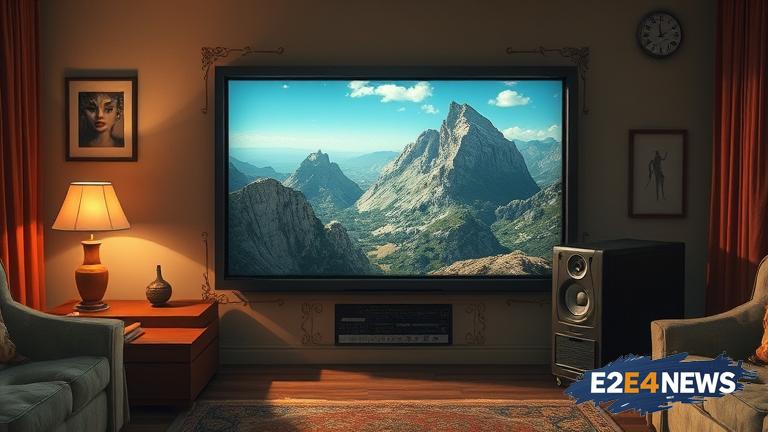Comfort TV has been a growing trend in recent years, with many viewers turning to familiar shows and genres as a way to relax and unwind. However, some critics argue that comfort TV has become overrated, with many shows relying on tired tropes and formulaic storytelling. One of the main issues with comfort TV is its lack of originality, with many shows feeling like rehashed versions of older, better programs. Despite this, comfort TV remains incredibly popular, with many viewers tuning in for the sense of nostalgia and familiarity it provides. The origins of comfort TV can be traced back to the early days of television, when shows like ‘I Love Lucy’ and ‘The Andy Griffith Show’ provided a sense of comfort and escapism for viewers. Over the years, comfort TV has evolved to include a wide range of genres, from sitcoms to dramas to reality TV. However, the core concept remains the same: to provide viewers with a sense of comfort and familiarity. Some of the most popular comfort TV shows include ‘The Office’, ‘Parks and Recreation’, and ‘Gilmore Girls’, all of which have gained massive followings and critical acclaim. However, even these shows have been criticized for their lack of originality and reliance on tired tropes. Despite this, comfort TV continues to be a major player in the world of entertainment, with many networks and streaming services investing heavily in comfort TV programming. The impact of comfort TV on society is also worth considering, as it can have both positive and negative effects. On the one hand, comfort TV can provide a sense of comfort and escapism for viewers, helping to reduce stress and anxiety. On the other hand, it can also perpetuate negative stereotypes and reinforce unhealthy attitudes and behaviors. Furthermore, the over-reliance on comfort TV can also lead to a lack of diversity and representation in the media, as well as a lack of innovation and creativity in storytelling. In addition, comfort TV can also have a negative impact on our mental and physical health, as it can lead to a sedentary lifestyle and a lack of engagement with the world around us. Moreover, the constant stream of comfort TV can also lead to a sense of burnout and fatigue, as viewers become desensitized to the constant barrage of familiar characters and storylines. To truly understand the concept of comfort TV, it’s essential to examine the psychological and sociological factors that drive its popularity. One of the primary reasons why comfort TV is so popular is that it provides a sense of nostalgia and familiarity, allowing viewers to relive fond memories and experiences. Additionally, comfort TV often features relatable characters and storylines, making it easy for viewers to become invested in the show. However, this can also lead to a lack of challenge and stimulation, as viewers become too comfortable with the familiar characters and storylines. In conclusion, while comfort TV may have its benefits, it’s essential to consider its limitations and potential drawbacks. By examining the origins, impact, and criticisms of comfort TV, we can gain a deeper understanding of this complex and multifaceted phenomenon. Ultimately, the key to a healthy and balanced viewing habits is to strike a balance between comfort TV and more challenging and thought-provoking programming. This can help to promote a more diverse and inclusive media landscape, as well as a more engaged and active viewing audience. Moreover, it’s crucial to recognize the importance of innovation and creativity in storytelling, as well as the need for more diverse and representative programming. By doing so, we can create a more vibrant and dynamic media landscape that caters to a wide range of tastes and preferences. The future of comfort TV is uncertain, but one thing is clear: it will continue to play a major role in the world of entertainment. As such, it’s essential to approach comfort TV with a critical and nuanced perspective, recognizing both its benefits and limitations. By doing so, we can create a more informed and engaged viewing audience, as well as a more diverse and inclusive media landscape.
